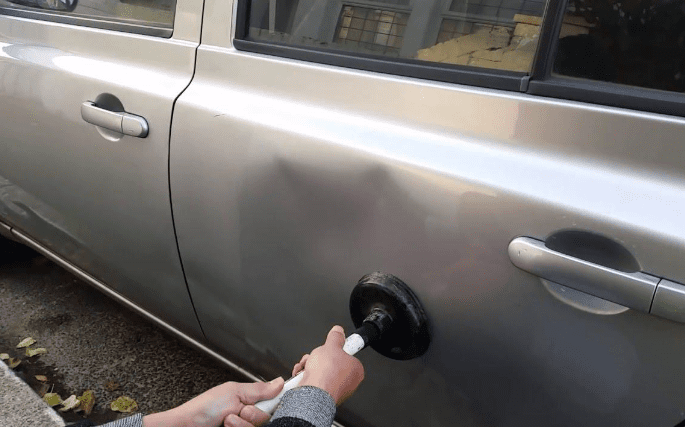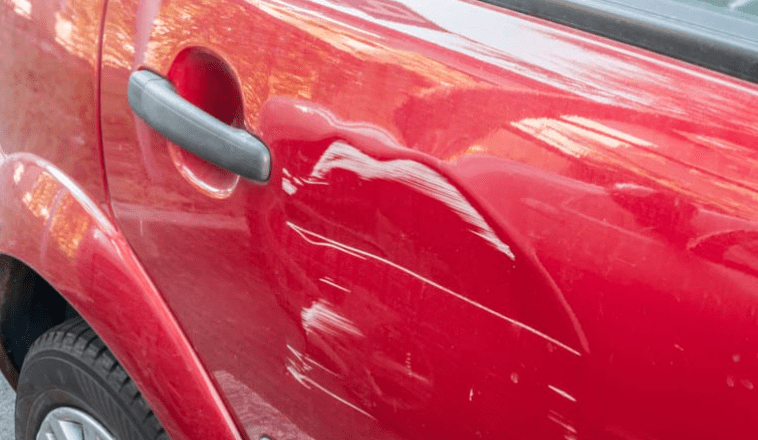Paintless Dent Repair (PDR) has emerged as a revolutionary technique in the automotive industry, providing an efficient and cost-effective solution for removing dents without compromising the vehicle’s original paint finish. In this comprehensive guide, we will delve into the intricacies of Paintless Dent Repair, exploring its history, process, benefits, and the evolving role it plays in the world of auto body repair.
Understanding Paintless Dent Repair:
History of Paintless Dent Repair
To truly appreciate the significance of Paintless Dent Repair, it is essential to understand its historical roots. The origins of PDR can be traced back to the mid-20th century when technicians began experimenting with non-intrusive methods for restoring the shape of vehicle panels. The evolution of PDR techniques has since transformed the industry, offering a more sustainable and environmentally friendly alternative to traditional dent repair methods.
The Science Behind Paintless Dent Repair
At the core of Paintless Dent Repair is a profound understanding of the properties of automotive metal and the principles of metal deformation. PDR technicians leverage this knowledge to manipulate the damaged area gradually, using specialized tools to massage the metal back to its original form without the need for painting or body fillers. This section will explore the physics and techniques involved in this delicate process.
for dent repair call us at (713)243-3535
The Paintless Dent Repair Process:
Advantages of Paintless Dent Repair:
PDR is a game-changer, offering a gentle, cost-effective, and environmentally friendly alternative to traditional dent removal. Here’s why PDR should be your go-to solution:
1. Preserves Original Paint:
No sanding, no repainting, no worries about color mismatch! PDR keeps your car’s factory finish intact, maintaining its value and beauty.
2. Cost-Effective Champion:
PDR often costs significantly less than traditional dent repair. You’ll save money on materials, labor, and the hefty price tag of repainting.
3. Time-Traveling Efficiency:
Unlike the days-long waits of traditional bodywork, PDR can often be completed in hours. Get your car back looking smooth and dent-free quickly.
4. Eco-Conscious Choice:
Say goodbye to harmful chemicals and emissions! PDR is an environmentally friendly process, leaving no carbon footprint.
5. Ideal for Hail Damage:
PDR excels at repairing hail damage, and restoring your car’s smooth silhouette without compromising the delicate paintwork.
6. Versatile Savior:
From minor dings to larger creases, PDR can tackle a wide range of dents on various car parts. Don’t be fooled by its name – its capabilities are expansive.
7. Minimally Invasive:
PDR often requires minimal disassembly, reducing the risk of interior damage and ensuring a cleaner, quicker repair process.
8. Enhanced Resale Value:
A car with its original paintwork commands a higher resale value. Choosing PDR keeps your car looking its best and potentially boosts its worth.
9. Long-Lasting Results:
When performed by a qualified technician, PDR repairs are durable and long-lasting, ensuring your car remains dent-free for years to come.
10. A Touch of Magic:
Witnessing the artistry of PDR technicians gently coaxing dents back into place is a mesmerizing experience. It’s a testament to human ingenuity and a guaranteed conversation starter.
So, the next time a dent disrupts your car’s smooth surface, remember the advantages of PDR. It’s a smart, efficient, and eco-friendly way to restore your car’s original beauty and value. Let the PDR masters work their magic, and watch your car’s dents become a distant memory.

PDR vs. Traditional Bodywork: When Paintless is the Perfect Choice
A ding in your fender, a crease in your door – car dents can be major buzzkills. But before you resign yourself to days in the body shop and a hefty bill, consider the rising star of dent removal: paintless dent repair (PDR).
PDR is like a metal massage, gently coaxing dents back into place without disturbing the original paintwork. But how does it stack up against traditional bodywork, and when is paintless the perfect choice?
The Showdown: PDR vs. Traditional Bodywork
| Feature | PDR | Traditional Bodywork |
|---|---|---|
| Paintwork | Preserves original paint | Requires sanding and repainting |
| Cost | Often significantly cheaper | More expensive due to materials and labor |
| Time | Can be completed in hours | Takes days or even weeks |
| Convenience | Mobile services available | Usually requires taking car to shop |
| Environment | Eco-friendly, no chemicals or emissions | Generates paint fumes and waste |
| Versatility | Works well on many dents, especially hail damage | Best for larger dents, not ideal for paint cracks |
| Skill level | Requires specialized expertise | Can be attempted by skilled DIYers |
When PDR Shines Bright:
- Minor to moderate dents: PDR excels at fixing dings, creases, and hail damage without disturbing the paint.
- Preserving value: Original paintwork boosts a car’s resale value, and PDR keeps it intact.
- Speed and convenience: PDR often offers same-day service, perfect for busy schedules.
- Eco-conscious choice: Minimize your environmental impact with PDR’s cleaner process.
The Ultimate Guide to Large Dent Repair Costs: A Comprehensive Breakdown
Traditional Bodywork Takes the Stage When:
- Severe dents or deep creases: PDR has limitations, and major damage might require traditional bodywork.
- Paint cracks or chips: PDR can’t fix paint damage, requiring bodywork and repainting.
- DIY aspirations: While PDR requires training, skilled DIYers might attempt simple repairs on specific dents.
Making the Right Choice:
The best solution depends on the dent’s severity, your budget, and your priorities. For minor to moderate dents, PDR offers a faster, cheaper, and environmentally friendly option. However, for major damage or paint cracks, traditional bodywork remains the go-to choice.
PDR Tip: Don’t wait! The sooner you seek repair, the easier it is to remove dents with PDR.
paintless dent repair in Houston TX
paintless dent repair cost
Dents on your car – like unwelcome party guests, they mar the smooth canvas of your beloved vehicle. Before you resign yourself to the costly dance of traditional bodywork and repainting, consider the gentle revolution of paintless dent repair (PDR). But how much does this automotive alchemy cost? Buckle up, for we’re about to unbox the mysteries of PDR pricing.
Factors that Drive the Price:
PDR pricing is like a chameleon, adapting to the specifics of your dent and car. Here are the key factors that influence the cost:
- Dent size and depth: Tiny dings are budget-friendly, while larger creases or hail damage might require more time and skill, bumping up the price.
- Dent location: Easy-to-access areas are simpler to work on, while dents on tricky spots like roofs or pillars might involve disassembly and cost more.
- Car type and material: Complex curves or materials like aluminum require specialized techniques, potentially impacting the price.
- Technician’s experience and location: Seasoned PDR masters command a premium, while location-specific variations in wages also play a role.
Price Ranges:
While pinpointing an exact cost requires a close examination by a PDR technician, here’s a general roadmap to navigate:
- Minor dings (½ inch or less): $50 – $100
- Small dents (1 – 3 inches): $100 – $300
- Medium dents (3 – 5 inches): $200 – $500
- Large dents (over 5 inches): $500+ (potentially escalating depending on complexity)
Remember: These are just estimates, and the actual cost might vary. Consult a qualified PDR technician for a precise quote.
Beyond the Numbers: Value for Your Money:
While cost is a crucial factor, don’t just chase the cheapest option. PDR offers unique benefits that go beyond the price tag:
- Preserves original paintwork: No sanding, no repainting, no color mismatch nightmares.
- Cost-effective in the long run: PDR often costs significantly less than traditional bodywork.
- Time-saving hero: PDR repairs can be completed in hours, not days.
- Eco-champion: No harmful chemicals or emissions pollute the process.
Conclusion:
In conclusion, Paintless Dent Repair has revolutionized the way we approach auto body repairs, offering a sustainable, cost-effective, and time-efficient alternative to traditional methods. The artistry and precision involved in PDR make it a valuable skill set within the automotive industry. As technology continues to advance, the future of Paintless Dent Repair holds exciting possibilities, shaping a landscape where craftsmanship and innovation converge to redefine the standards of auto body repair.






